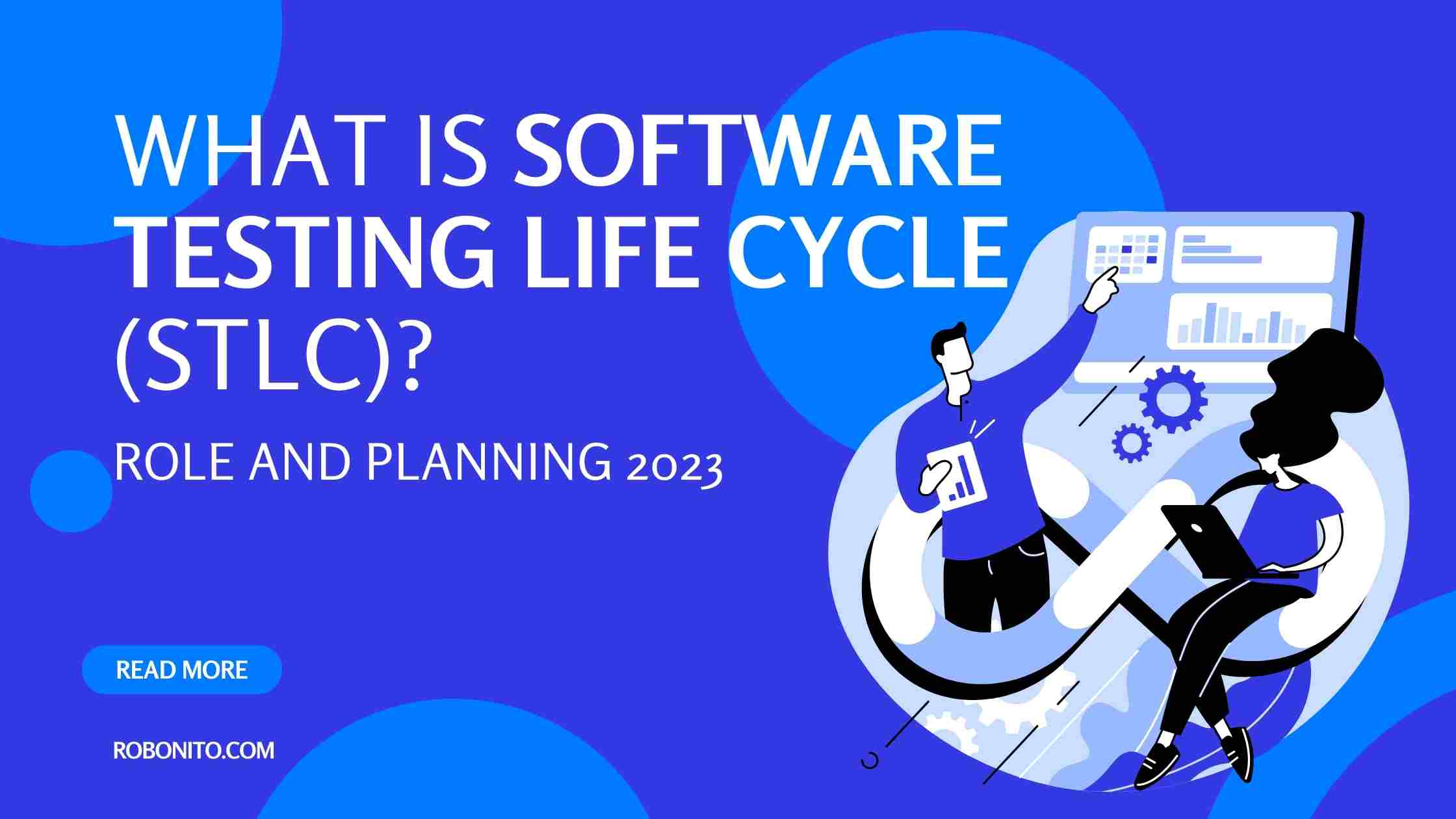Just as architects follow a blueprint and the construction process to build a tower, Software developers stick to a systematic technique known as the Software Development Life Cycle (SDLC) to produce software. Another crucial lifecycle included within this framework is the Software Testing Life Cycle (STLC).
Introduction
The Software Testing Life Cycle (STLC) is a series of phases and tasks that guide the testing process. It is the quality control mechanism, the software's guardian angel, making sure that it not only works but also thrives in the actual world. In this article, we will go deep into the STLC, its phases, and its integration with the SDLC. So let us begin a treasure hunt to understand what is the software testing life cycle and how it affects the quality of software.
What Is the Software Testing Life Cycle?
 A software testing lifecycle is a well-defined process used by software development
teams to verify the software application, before release to end-users. It’s a crucial
process, it lays the foundation for the entire software development journey. The STLC is
about testing the software in a structured and thorough manner to detect and fix any
bugs.
A software testing lifecycle is a well-defined process used by software development
teams to verify the software application, before release to end-users. It’s a crucial
process, it lays the foundation for the entire software development journey. The STLC is
about testing the software in a structured and thorough manner to detect and fix any
bugs.
Think of it as a road plan for the entire testing procedure. Understanding the software requirements and organizing the testing process are the primary steps. The software is then put to the test and thoroughly evaluated. The testing phase is formally closed after any problems identified during this stage are reported and fixed. The STLC makes sure that the software works as intended, satisfies user expectations, and is free of flaws or vulnerabilities. It's an essential component of software development that ensures the final product's reliability and quality.
What are STLC and SDLC?

The Software Testing Life Cycle (STLC) and the Software Development Life Cycle (SDLC) are two essential software engineering processes that collaborate but have different goals and stages. Now let's explore each of them:
Software Testing Life Cycle (STLC):

-
Purpose: The main focus of STLC is the testing phase of software development. Its fundamental objective is to guarantee that the software is of the highest quality, operates properly, satisfies user needs, and is error- and defect-free.
-
Stages: Requirement analysis, test planning, test design, test execution, defect reporting, and test closure are some of the phases that make up the STLC. Each stage has particular goals and tasks that add to the overall process of quality assurance.
-
Activities: Testers build test cases, scenarios, and scripts during the STLC process using the requirements of the software. They run these tests, keep track of the outcomes, and document any faults they detect. It is intended to spot and fix issues early in the development phase.
-
Outcome: Using the software's requirements, testers create test cases, scenarios, and scripts during the STLC process. They carry out these tests, monitor the results, and record any errors they find. It is aimed to identify problems early on and address them.
Software Development Life Cycle (SDLC):

-
Purpose: Contrarily, SDLC concentrates on the complete software development process. It includes the software's planning, coding, testing, deployment, and maintenance of the software. Its main focus is to create software that satisfies user requirements and business objectives.
-
Stages: Planning, requirement analysis, design, implementation (coding), testing, deployment, and maintenance are typical aspects of the SDLC. The entire process of developing software is guided by these phases.
-
Activities: In the SDLC, programmers build the software following the specifications. To make sure that each component functions as intended, they design the system architecture, write code, and conduct unit testing. After being created, the software is tested, and any flaws are corrected.
-
Outcome: A software product that satisfies business objectives is the SDLC's ultimate goal. It involves not only the development of software but also its deployment and continual upkeep to keep it functional and relevant.
What Is the Role of STLC in SDLC?

A crucial and essential part of the larger Software Development Life Cycle (SDLC) is played by the Software Testing Life Cycle (STLC). It plays the role of a vigilant guardian, making sure that the software product that emerges from the SDLC is not only functional but also reliable and free of major defects.
| Aspect | STLC (Software Testing Life Cycle) | SDLC (Software Development Life Cycle) |
|---|---|---|
| Purpose | Ensure software quality through testing and bug analysis. | Covers the entire software development process from planning to deployment. |
| Focus | Quality control and defect prevention. | Planning, designing, coding, and deployment are all included in end-to-end software development. |
| Phases | Requirement Analysis, Test Planning, Test Design, Test Execution, Defect Reporting, Test Closure. | Planning, Requirement Analysis, Design, Implementation (Coding), Testing, Deployment, Maintenance. |
| Activities | Creating test cases, running tests, reporting defects, and continuous quality evaluation. | Requirement gathering, system design, coding, unit testing, integration, system testing, deployment, and maintenance. |
| Timing | Ensures testing happens at every level while operating concurrently with SDLC phases. | Starts with project planning and ends with maintenance after deployment. |
| Objectives | Identifying defects and restoring them, checking functioning, and making sure that user needs are met. | Developing software that satisfies user requirements and business objectives. |
STLC (Software Testing Life Cycle) and SDLC (Software Development Life Cycle) play an important role in creating a good software product. STLC works as a quality checker and investigator, working with the entire process of SDLC. Together, they ensure that the software is not only well designed but also managed to the best of its ability, meeting user needs and business standards. They are like a powerful duo that keeps the software world running smoothly.
What Are the Phases of Testing?
The testing process in software development consists of several different phases, each with specific goals and tasks. It involves starting, completing, and terminating the testing process. Let's go through these phases to make them easier to understand:
Requirement Analysis :
-
Purpose: This phase begins the testing process by understanding and defining the software requirements.
-
Activities: To fully understand the project's scope, goals, and user expectations, testers collaborate with stakeholders. They meticulously look over the requirements to determine what has to be tested and specify the testing scope.
-
Importance: Requirement analysis makes sure that the testing effort is perfectly in line with the functionality that the software is supposed to provide. It creates a clear road map, making sure no important details are overlooked.
Test Planning:
-
Purpose: The goal of test planning is to create an effective method to complete the testing process.
-
Activities: The testing team creates a comprehensive test strategy during this stage. This plan specifies the testing's parameters, its goals, allows the required resources (such as testers and testing equipment), and establishes deadlines and schedules.
-
Importance: The foundation of the testing process is laid by test planning. It enables efficient allocation of resources and ensures that everyone involved is aware of the testing objectives and how they will be achieved.
Test Case Designing and Development:
-
Purpose: This phase mostly involves creating specific test cases and scenarios.
-
Activities: Testers create detailed test cases and scenarios based on the needs of the software. These test cases specify the precise procedures to be followed during testing, together with the required inputs and anticipated results.
-
Importance: Systematic and comprehensive testing is ensured by test case design. It offers a guide for carrying out tests, making it easier to find problems.
Test Environment Setup:
-
Purpose: To perform a useful test, a suitable test environment must be created.
-
Activities: The testing team sets up the required hardware, software, and network configurations during this stage. They guarantee that the testing environment closely resembles actual environmental factors.
-
Importance: Reliable testing requires a well-prepared test environment to ensure that test results correctly reflect how the software will function in reality.
Test Execution:
-
Purpose: The actual execution of test cases and scripts occurs at this phase.
-
Activities: Testers execute the test cases in the defined test environment, record the outcomes, and compare them with anticipated results. Any errors or discrepancies are noted for further investigation.
-
Importance: The fundamental component of the testing process is test execution, which verifies that the software performs as intended and finds any problems or flaws that require attention.
Test Closure:
-
Purpose: In the last stage, the testing procedure is summarized and finished.
-
Activities: The process of closing a test involves creating test closure reports, analyzing the testing effort, and getting approvals to finish the test. It additionally covers the lessons learned during the testing process.
-
Importance: Test closure guarantees that the testing procedure is formally over and that all required paperwork is in order. It enables the team to review testing efforts and enhance procedures for upcoming projects.
| Phase | Purpose | Activities | Importance | Deliverables |
|---|---|---|---|---|
| Requirement Analysis | Begin understanding software requirements | - Collaborate with stakeholders to understand project scope, goals, and user expectations - Meticulously review requirements to determine testing scope | Ensure testing aligns perfectly with software functionality, creating a clear roadmap and avoiding overlooked details | - Requirement Traceability Matrix |
| Test Planning | Create an effective testing method | - Develop comprehensive test strategy - Specify parameters, goals, required resources, deadlines, and schedules | Lay foundation for testing process, enabling efficient resource allocation, and ensuring clarity on objectives and how to achieve them | - Test Plan, Resource Allocation Plan |
| Test Case Design & Development | Create specific test cases & scenarios | - Create detailed test cases based on software needs - Specify procedures, required inputs, and expected results | Ensure systematic and comprehensive testing, providing a guide for executing tests and facilitating problem identification | - Test Cases, Test Scenarios |
| Test Environment Setup | Establish a suitable testing environment | - Set up necessary hardware, software, and network configurations - Ensure test environment closely resembles actual environmental factors | Ensure reliable testing by replicating real-world conditions, allowing accurate reflection of software functionality | - Test Environment Setup Documentation |
| Test Execution | Execute test cases and scripts | - Execute test cases in defined test environment - Record outcomes and compare with expected results - Note errors or discrepancies for investigation | Verify software performance, identify problems or flaws, and ensure the software behaves as intended | - Test Execution Reports |
| Test Closure | Summarize and complete testing procedure | - Create test closure reports - Analyze testing effort and seek approvals to finish the test - Cover lessons learned during testing process | Formalize conclusion of testing, ensure necessary documentation is complete, review testing efforts, and improve processes for future projects | - Test Closure Report, Lessons Learned |
Conclusion:
The Software Testing Lifecycle (STLC) is the silent guardian of quality in the world of software. Every stage plays an important role, from Requirement analysis to Test Closure. STLC is about creating outstanding user experiences, not just resolving problems. Let's recognize STLC as an unsung hero and appreciate its dedication to excellence. Ready to go on the adventure? Expand your knowledge about software testing for outstanding achievement!
FAQs
-
What is the Software Testing Life Cycle (STLC)?
- The Software Testing Life Cycle (STLC) is a well-defined process used by software development teams to verify software applications before release. It involves a structured and thorough approach to testing, aiming to detect and fix bugs.
-
How does STLC differ from SDLC (Software Development Life Cycle)?
- STLC primarily focuses on testing phases to ensure software quality, while SDLC covers the entire software development process from planning to deployment and maintenance.
-
What are the main phases in STLC?
- The main phases in STLC include Requirement Analysis, Test Planning, Test Design, Test Execution, Defect Reporting, and Test Closure. Each phase has specific goals and contributes to ensuring software quality.
-
What is the role of STLC in SDLC?
- STLC, within the broader SDLC, ensures that the software product emerging from the development process is not only functional but also reliable and free of major defects. It acts as a quality checker and works in sync with SDLC phases to maintain software standards.
-
How does STLC ensure software quality?
- STLC ensures software quality by creating test cases, executing tests, reporting defects, and continuously evaluating software quality. Its goal is to identify defects early in the development phase and address them effectively.
-
Why is Test Closure an important phase in STLC?
- Test Closure summarizes the testing procedure, creates closure reports, analyzes testing efforts, and captures lessons learned during the process. It ensures formal closure of testing activities and provides insights to improve future testing processes.
-
What makes STLC an integral part of software development?
- STLC acts as the quality assurance mechanism, ensuring that the software not only meets user expectations but also functions reliably, free of flaws or vulnerabilities. It contributes significantly to the reliability and quality of the final software product.
-
How does STLC benefit software development teams?
- STLC provides a systematic approach to testing, enabling teams to detect and rectify issues early in the development cycle. It improves software quality, reduces rework, and enhances user satisfaction with the final product.
